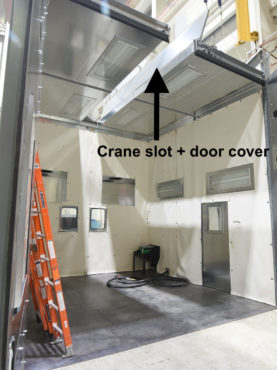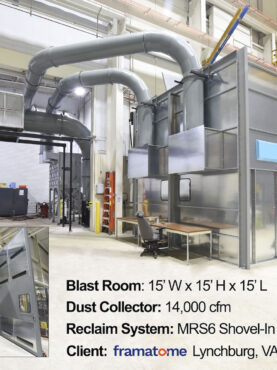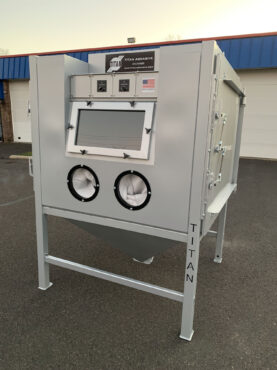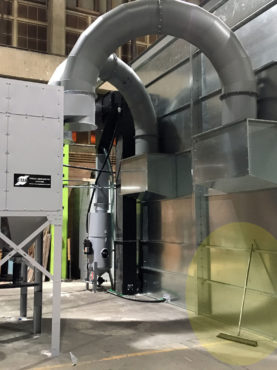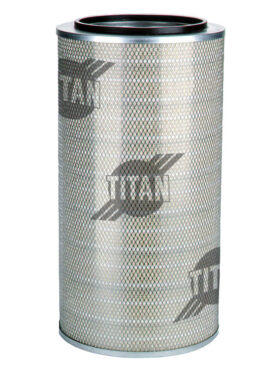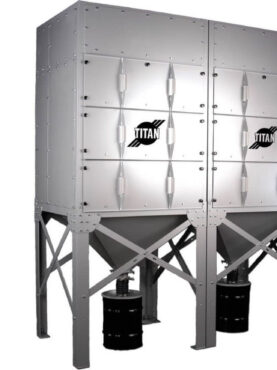

Which Blast Media Should I Use With My Titan Blast Machine?
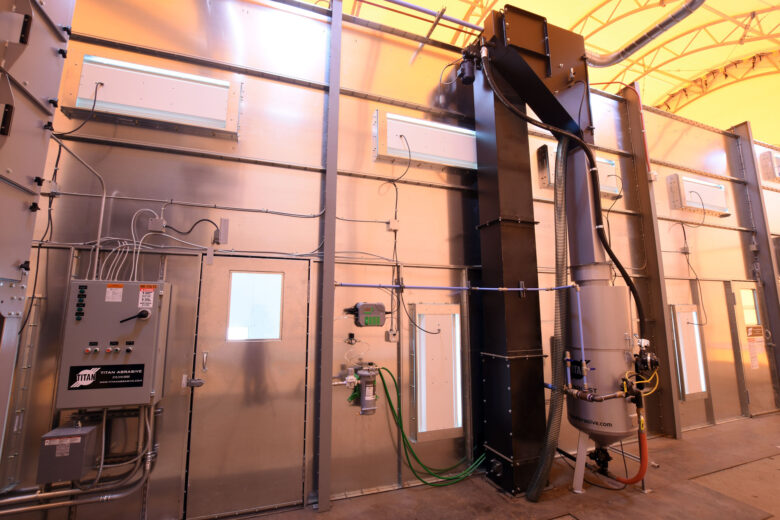
Before answering the question about blast media, it helps to explain the various components that comprise a blast machine system and how they work together. Once you understand the operation, it’s then easier to choose the correct abrasive media for your application.
The following information pertains to blast machines used within industrial blast rooms.
Blast machines, abrasive regulator valves
Most blast machines, including those manufactured by Titan Abrasive, consist of an abrasive regulator valve (i.e. abrasive regulator, media regulator, grit valve, etc.), air inlet valve, and an exhaust valve (used on the pressure-release models).
All of these valves work together.
In a pressure-hold system, you have a normally closed abrasive regulator and a normally closed air inlet valve. When the deadman switch is depressed, both valves open and the blasting operation begins. When the deadman is released, both valves close and blasting stops, but pressure remains in the tank (hence the name pressure-hold).
In a pressure-release system, you have a manual abrasive regulator, a normally closed air inlet valve, and a normally open exhaust valve. When the deadman switch is depressed, the normally closed air inlet valve opens and simultaneously the normally open exhaust valve closes, pressurizing the tank and blasting begins. When the deadman is released, the air inlet valve closes and the exhaust valve opens, releasing pressure (hence the name pressure-release) from the tank and blasting stops.
Read more about deadman switches for blast machines.
Designed for any type of media
Titan abrasive regulator valves are constructed from heavy-duty cast iron and are designed to work with any media type. Switching to a different media only requires changing out the media, not the valve – saving you considerable down-time.
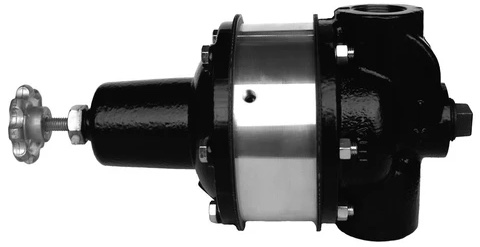
They’re also fully adjustable, which means they can be used at different air pressures.
Titan valves use the same internal components, which means you don’t need to stock multiple repair parts or kits. Parts for each valve type are interchangeable and the valves themselves are easy to maintain. See our Parts Store for our full range of valves, parts, and kits.
Preventing clogging
Clogging is a huge issue with abrasive media, but the number one reason a clog happens isn’t due to media type, it’s due to moisture.
To prevent clogging, it’s critically important that clean DRY air be used when using your Titan blast machine.
While Titan blast machines are less prone to clogging because of our valve design, should a clog occur, clean out is quick and easy via a 1” cleanout plug on the backside of the valve.
Media Reclaim Systems: Mechanical vs. Vacuum
In order to reduce costs and waste, blast media is reclaimed and then reused over several blast applications. The reclaim system integrates with the blast machine for a closed-loop system.
Mechanical reclaim systems consist of a bucket elevator and hopper. The media is either manually swept or shoveled into the systems hopper, depending on how the hopper is mounted.
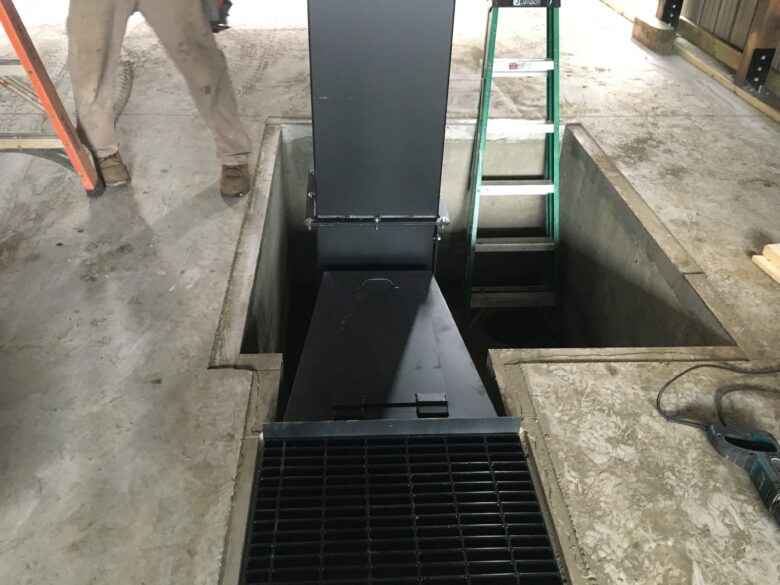
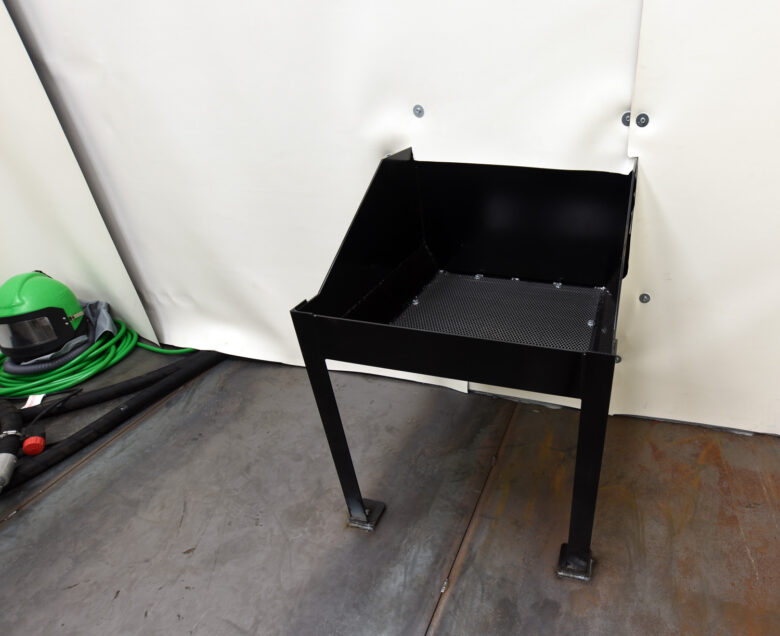
A mechanical reclaim system with a bucket elevator can be used with almost any type of media; however, it’s most commonly used with steel grit/shot or aluminum oxide as these media are quite heavy and difficult to reclaim through vacuum systems.
Regardless of the media used with it, a mechanical reclaim system is much faster than a vacuum system and requires less maintenance.
If production speed is critical for your application, a mechanical reclaim system is your best choice.
Vacuum reclaim systems are an economical alternative to mechanical reclaim systems and work well with lighter media, such as glass bead and plastic. If harsher media is to be used, such as aluminum oxide, it’s recommended that the system is lined with rubber for longevity.
Vacuum systems are easier to operate, don’t require any foundation or concrete work, and are easy to relocate.
Additional information about blast media
According to Dawn Schwab of Greenhill Supply, sandblasting media specialists in Philadelphia, PA, blast media and a few of their applications include:
| Removing Rust or Paint | Polishing, Peening, Cleaning | Wood, Glass, Plastic | Steel; heavy-duty jobs | |
|---|---|---|---|---|
| Aluminum Oxide | ||||
| Garnet | ||||
| Glass Beads | ||||
| Plastic | ||||
| Starblast | ||||
| Steel Shot | ||||
| Steel Grit | ||||
| Walnut Shells |
Schwab also says that choosing the right blast media depends on the application and material type, the blaster (nozzle size, pressure), and how often the media will be reclaimed. She recommends working with your equipment supplier to determine your blast machine configuration if a specific media will be used.
For a more technical discussion about blast media and their properties, we recommend reading, “How to Choose the Right Blast Media” by Graco. You’ll learn about surface characteristics, anchor patterns, shapes, and blast media density/hardness.

Brandon Acker: President
Brandon purchased Titan Abrasive from his uncle and founder in 2013. Titan has since redesigned its entire product line to solve dozens of industry challenges.
Brandon purchased Titan Abrasive from his uncle and Titan founder, Bruce Maurer, in 2013 after spending five years learning the ins and outs of the business. He and VP of Engineering Brian Fox have completely redesigned the entire product line to solve the dozens of challenges that have plagued the blasting industry for decades.
Brandon is passionate about American manufacturing, the jobs it creates, the quality produced, and the bright future that lies ahead. He’s a frequent guest on manufacturing podcasts where he shares his deep industry expertise. Brandon holds a Bachelor of Science degree from Arizona State University.


